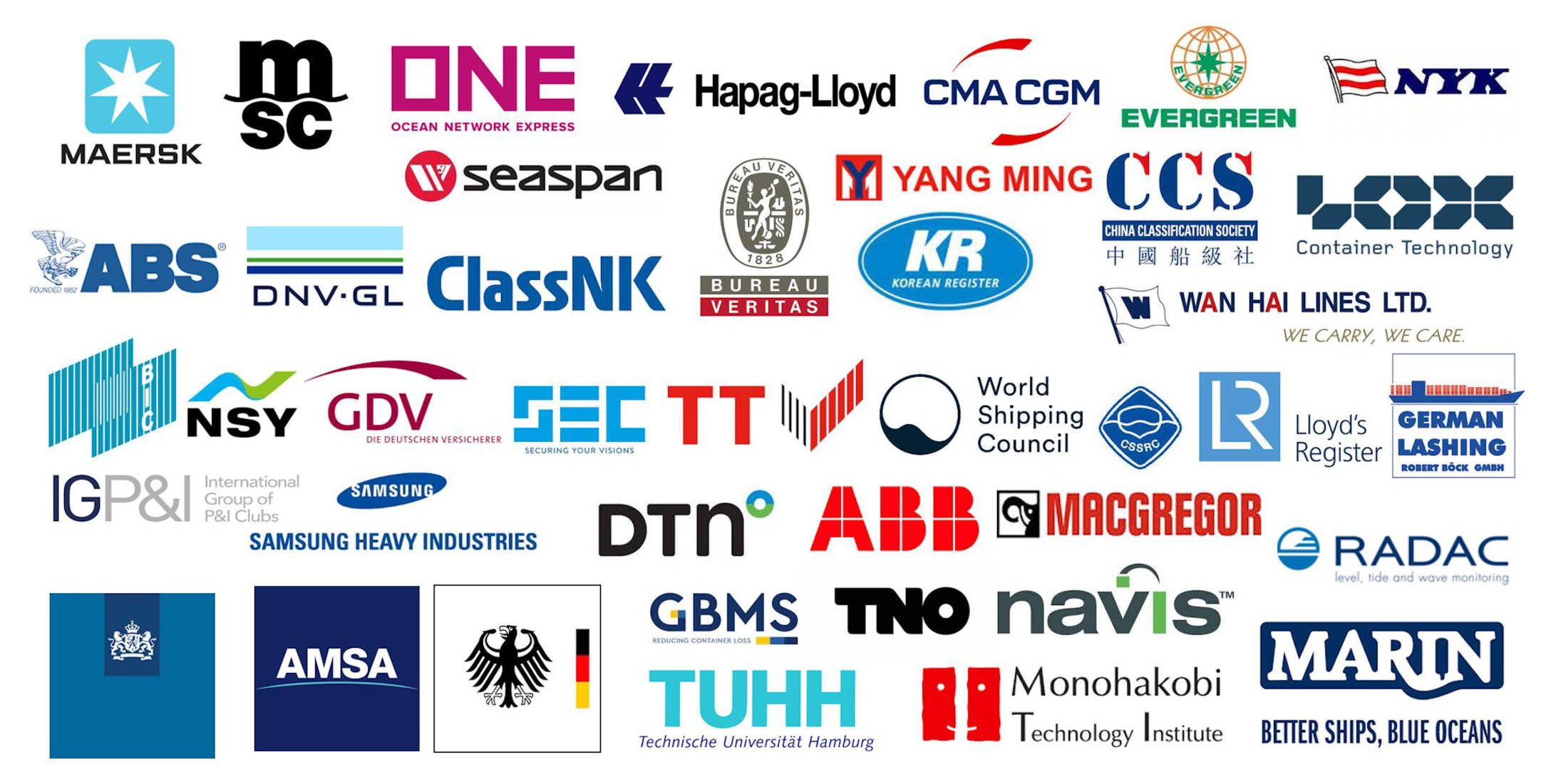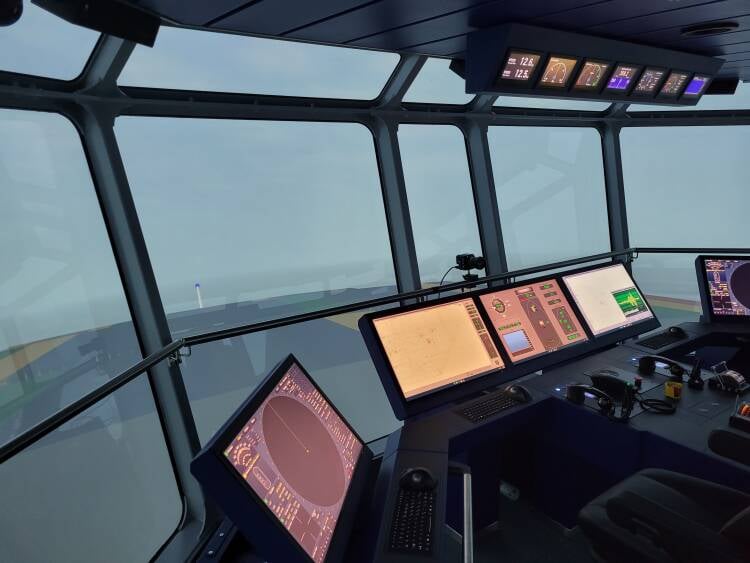Operational Guidance Parametric Roll









October 2024, no. 141
Create a MARIN account to stay updated





Report
Developing operational guidance to mitigate the risks of parametric rolling

Parametric roll has been found to be an important contributor to container losses at sea. But how can we support seafarers to recognise the preconditions for parametric roll, acknowledge the risk of parametric rolling, know what to do, make the appropriate decision and act?
Recognising the first signs
Parametric roll is an ‘ill behaved’ phenomenon. The moment it occurs, and especially the maximum roll angle into which it develops, are difficult to predict. When the right wave preconditions are met, parametric roll starts, and roll angles increase rapidly to potentially extreme angles. There might be only a couple of oscillations between insignificant ‘noise’ and angles above 30 degrees.
Acting only once the roll angle already exceeds a certain limit does not allow sufficient time to change course or speed. As a result, parametric roll preconditions should ideally be avoided in advance. But this depends on the combination of the natural roll period of the ship and wave encounter period. However, there might be situations when all the information needed is not reliable or available in time or there are no options to change course or speed. Therefore, it is not always possible to completely avoid getting into conditions that are too close to parametric roll preconditions.
Readiness to take action
Understanding the risks associated with parametric rolling is a crucial element when considering decisions about when to take action. The ‘moving base bridge simulation’ is a unique facility in which parametric roll can be experienced, creating more understanding of and awareness about parametric rolling. The flexible layout of the bridge also combines awareness training with the development of the operational procedures with operational guidance instruments.
Parametric roll risk instruments
It is of utmost importance that the operational guidance instruments are robust and reliable. This requires three key elements: the ship specific roll risk, the natural roll period and the wave encounter period. The ship specific roll risk is depending on the sensitivity to stability variations in waves and the roll damping. To predict the maximum roll angles, high-fidelity seakeeping simulations are required, preferably validated with dedicated model tests. The resulting polar plots can be used as onboard guidance. These high-fidelity parametric roll simulations are not trivial, as shown in (Grin, STABS 2024). If only seeking to avoid parametric roll, it might be sufficient to use low- fidelity tools in which only the parametric roll risk is estimated without prediction of the roll angle. For both the low-fidelity and high-fidelity method the natural roll period and the ship wave encounter period are important parameters. Prior to the voyage, prediction methods can be applied to estimate the natural roll period (Grin, IMDC 2024). Then during the voyage, it can be measured with a higher level of accuracy. The same goes for the wave encounter period. Prior to the voyage it may be obtained from wave forecasts – with all the uncertainties of predicting the weather. Underway, the wave encounter period can be measured. Reliable information about actual wave conditions will contribute to the reduction of the uncertainties. The wave information, especially the period and direction, are important parameters to be able to provide operational guidance on course and speed.
TopTier participants - maritime professionals with varying levels of experience on containerships ranging from six months up to 10 years - underwent controlled experiments designed to evoke conditions conducive to parametric rolling. The study employed a snowball sampling method to recruit 15 qualified participants, who completed multiple experimental runs under various wave conditions and different levels of available information. This included a polar diagram providing information about roll risk.
Based on the experiment, it seems justified to conclude that the judgement of the seafarer alone is not enough to prevent parametric rolling without further instruments and training. Operational guidance should be in place and to be truly valuable it needs to include reliable and robust decision support instruments, clear procedures on operational and tactical levels, and training.
Insight MARIN has gained from onboard measurements clearly shows that sometimes the first signs of parametric rolling already occur hours before the ship reaches extreme roll angles. This illustrates that it is very important to recognise the first signs of the preconditions of parametric rolling. In hindsight this could have made a difference in recent incidents.
Experiencing parametric rolling on the Large Motion Simulator
To better understand the seafarers' experiences and responses to the early signs of parametric rolling and to investigate the potential added value of operational guidance, a simulator study was conducted using the brand-new Large Motion Simulator (LMS).
Parametric rolling can occur when the wave encounter period is approximately half of the ship’s natural period. When the waves are sufficiently high and the roll damping low, it can lead to severe rolling within a short timeframe. Acting once the roll angles already exceed a certain limit is too late in most cases, as there is not enough time to change course or speed. Therefore, parametric roll preconditions should be prevented.
The TopTier JIP, which comprises a wide consortium of stakeholders from the shipping industry and safety authorities, is committed to preventing the loss of containers and is addressing the challenges surrounding the prevention of parametric rolling. In this article we describe how MARIN contributes to the development of operational guidance with knowledge, tools and facilities.
The ‘moving base bridge simulation’ is a unique facility in which parametric roll can be experienced.

Interested? Contact us to discuss your options

More info

Concept of a roll risk polar diagram used during the experiment on the LMS.


www.marin.nl/jips/toptier





www.marin.nl/jips/toptier

Readiness to take action
Understanding the risks associated with parametric rolling is a crucial element when considering decisions about when to take action. The ‘moving base bridge simulation’ is a unique facility in which parametric roll can be experienced, creating more understanding of and awareness about parametric rolling. The flexible layout of the bridge also combines awareness training with the development of the operational procedures with operational guidance instruments.
The ‘moving base bridge simulation’ is a unique facility in which parametric roll can be experienced.

Parametric roll risk instruments
It is of utmost importance that the operational guidance instruments are robust and reliable. This requires three key elements: the ship specific roll risk, the natural roll period and the wave encounter period. The ship specific roll risk is depending on the sensitivity to stability variations in waves and the roll damping. To predict the maximum roll angles, high-fidelity seakeeping simulations are required, preferably validated with dedicated model tests. The resulting polar plots can be used as onboard guidance. These high-fidelity parametric roll simulations are not trivial, as shown in (Grin, STABS 2024). If only seeking to avoid parametric roll, it might be sufficient to use low- fidelity tools in which only the parametric roll risk is estimated without prediction of the roll angle. For both the low-fidelity and high-fidelity method the natural roll period and the ship wave encounter period are important parameters. Prior to the voyage, prediction methods can be applied to estimate the natural roll period (Grin, IMDC 2024). Then during the voyage, it can be measured with a higher level of accuracy. The same goes for the wave encounter period. Prior to the voyage it may be obtained from wave forecasts – with all the uncertainties of predicting the weather. Underway, the wave encounter period can be measured. Reliable information about actual wave conditions will contribute to the reduction of the uncertainties. The wave information, especially the period and direction, are important parameters to be able to provide operational guidance on course and speed.

Concept of a roll risk polar diagram used during the experiment on the LMS.
Interested? Contact us to discuss your options
More info
October 2024, no. 141



Insight MARIN has gained from onboard measurements clearly shows that sometimes the first signs of parametric rolling already occur hours before the ship reaches extreme roll angles. This illustrates that it is very important to recognise the first signs of the preconditions of parametric rolling. In hindsight this could have made a difference in recent incidents.
Experiencing parametric rolling on the Large Motion Simulator
To better understand the seafarers' experiences and responses to the early signs of parametric rolling and to investigate the potential added value of operational guidance, a simulator study was conducted using the brand-new Large Motion Simulator (LMS).
Recognising the first signs
Parametric roll is an ‘ill behaved’ phenomenon. The moment it occurs, and especially the maximum roll angle into which it develops, are difficult to predict. When the right wave preconditions are met, parametric roll starts, and roll angles increase rapidly to potentially extreme angles. There might be only a couple of oscillations between insignificant ‘noise’ and angles above 30 degrees.
Acting only once the roll angle already exceeds a certain limit does not allow sufficient time to change course or speed. As a result, parametric roll preconditions should ideally be avoided in advance. But this depends on the combination of the natural roll period of the ship and wave encounter period. However, there might be situations when all the information needed is not reliable or available in time or there are no options to change course or speed. Therefore, it is not always possible to completely avoid getting into conditions that are too close to parametric roll preconditions.
Parametric rolling can occur when the wave encounter period is approximately half of the ship’s natural period. When the waves are sufficiently high and the roll damping low, it can lead to severe rolling within a short timeframe. Acting once the roll angles already exceed a certain limit is too late in most cases, as there is not enough time to change course or speed. Therefore, parametric roll preconditions should be prevented.
The TopTier JIP, which comprises a wide consortium of stakeholders from the shipping industry and safety authorities, is committed to preventing the loss of containers and is addressing the challenges surrounding the prevention of parametric rolling. In this article we describe how MARIN contributes to the development of operational guidance with knowledge, tools and facilities.




Operational Guidance Parametric Roll
Developing operational guidance to mitigate the risks of parametric rolling
Create a MARIN account to stay updated

Parametric roll has been found to be an important contributor to container losses at sea. But how can we support seafarers to recognise the preconditions for parametric roll, acknowledge the risk of parametric rolling, know what to do, make the appropriate decision and act?
Report









